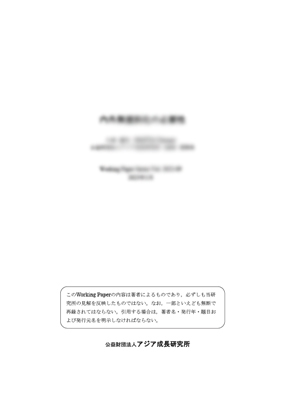Emergence of China and the Implications for Regional Trade Initiatives in the Asian Pacific

| Author | Hiro Lee, David Roland-Holst, Dominique van der Mensbrugghe |
|---|---|
| Date of Publication | 2002. 11 |
| No. | 2002-27 |
| Download | 358KB |
Contents Introduction
China’s accession to WTO and accelerated global emergence will dramatically change trade patterns with the Pacific region and exert important influence on its trilateral relationship with Japan and the United States. Because of its size and stage of development, China will play two roles in the region with unusual prominence. First, it will stiffen regional export competition in a broad spectrum of products. Second, the size of China’s growing internal market will make it, by 2015, the largest trading nation in East Asia. Thus China interposes itself between the rest of East Asia and the U.S.-Japan market as an export competitor and magnet for imports. The objective of this paper is to evaluate this phenomenon empirically and elucidate the regional and domestic adjustments that might ensue. Our basic finding is that the United States, Japan, and China would gain substantially from a trilateral free trade agreement and, indeed, they could realize most of the residual gains from globalization thereby. We contrast this with the many suggestions for China’s involvement in less inclusive East Asian FTAs, and we find this would benefit smaller member economies (e.g., ASEAN countries), but not China itself.
